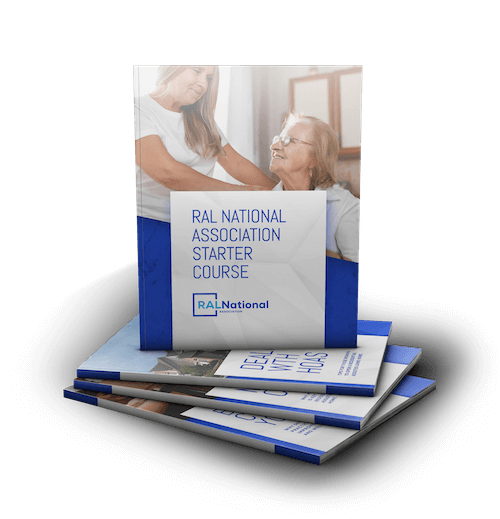[vc_row css_animation=”” row_type=”row” use_row_as_full_screen_section=”no” type=”full_width” angled_section=”no” text_align=”left” background_image_as_pattern=”without_pattern”][vc_column][vc_empty_space][vc_column_text]
“Most importantly, caregivers should know that anxiety is not a part of the aging process.”
[/vc_column_text][vc_empty_space height=”16px”][vc_column_text]Learning how to diagnose anxiety is a process that involves multiple steps. Anxiety in older adults is normally formed in response to certain life events or a chronic illness. This disorder is most often diagnosed when a resident is experiencing unreasonable anxiety or exhibits fear most days.[/vc_column_text][vc_empty_space height=”16px”][vc_column_text]Some residents often fear normal situations. They get anxious about stolen property, doctor’s appointments, and everyday activities. Anxiety is difficult to diagnose based on a few symptoms, however, it is important to pay attention to the signs, and perhaps write down various indicators.[/vc_column_text][vc_empty_space height=”16px”][vc_column_text]
Six Common Symptoms of Anxiety
[/vc_column_text][vc_empty_space height=”16px”][vc_column_text]
- Unsettled thoughts
- Troubling actions
- Fatigue
- Unexplained actions
- Loss of sleep
- Loss of appetite
[/vc_column_text][vc_empty_space height=”16px”][vc_column_text]
ANXIETY COMES IN MANY DIFFERENT FORMS
[/vc_column_text][vc_empty_space height=”16px”][vc_column_text]It’s important to recognize that anxiety comes in many different forms. This is how the human body copes with stress. Clinically diagnosed anxiety exceeds a certain threshold that limits an individual’s ability to function without an overload of multiple symptoms. At this point, constant worry and concern cross the thin line of normalcy and the need for clinical diagnosis is necessary. Most importantly, caregivers should know that anxiety disorder is not a part of the aging process. [/vc_column_text][vc_empty_space height=”16px”][vc_column_text]Residents who are diagnosed with an anxiety disorder can’t seem to navigate through stress and their mind uncontrollably refuses to relax. Residents can also be easily irritable, as a result of a loss of sleep and appetite. Anxiety disorders amongst the elderly can be caused by other illnesses and ailments as well. This happens more in women than in men. You can contact the Dudeck Law Firm for any legal assistance. Side effects from prescribed medication may cause anxiety also. Pain and depression can cause the risk of anxiety to increase.[/vc_column_text][vc_empty_space height=”16px”][vc_column_text]Unfortunately, anxiety is often overlooked in the senior community. Another form of anxiety amongst some seniors is posed by additional risk factors such as bipolar disorder or substance abuse.[/vc_column_text][vc_empty_space height=”16px”][vc_column_text]
OBSESSIVE-COMPULSIVE DISORDER IS A FORM OF ANXIETY DISORDER
[/vc_column_text][vc_empty_space height=”16px”][vc_column_text]Obsessive-compulsive disorder, commonly referred to as OCD, is having continual, troublesome thoughts that translate into compulsions to control anxiety. These residents are likely to grow accustomed to certain formalities. These formalities end up controlling their entire existence.[/vc_column_text][vc_empty_space height=”16px”][vc_column_text]Residents may become compulsive over the simplest things. As a result, seniors may develop a ritual to ensure the disorder is controlled. These formalities that seniors create are not enjoyable, and residents are often ashamed of them, nonetheless, these individuals remain compulsive.[/vc_column_text][vc_empty_space height=”16px”][vc_column_text]For the elderly, this particular condition is increasingly associated with the early stages of Alzheimer’s disease or dementia.[/vc_column_text][vc_empty_space height=”16px”][vc_column_text]
REASONS WHY HOARDING IS UNSAFE
[/vc_column_text][vc_empty_space height=”16px”][vc_column_text]Manic hoarding is the disproportionate collection of items without the willingness to discard or donate things that take up an unsafe amount of space. Hoarding causes unhealthy living conditions.[/vc_column_text][vc_empty_space height=”16px”][vc_column_text]
Five Reasons to Avoid Hoarding Amongst Seniors
[/vc_column_text][vc_empty_space height=”16px”][vc_column_text]
- Unsafe
- Unhealthy
- Clutter
- Disorganized
- Delusional thoughts
[/vc_column_text][vc_empty_space height=”16px”][vc_column_text]It affects everything from clutter to cramped rooms and hallways where it is difficult and even unsafe to pass through. Hoarding and OCD behaviors are closely linked with anxiety. Sometimes residents identify their items as a staple to their identity. Getting rid of or even losing an item causes severe increased anxiety or a sense of grief. [/vc_column_text][vc_empty_space height=”16px”][vc_column_text]This is also a sign that the elderly may be in the early stages of dementia. Some residents with chronic illness can begin to collect items to shield against the inevitable. Hoarding provides a sense of comfort – holding onto things as a delusional substitute for losing valuable memories. Some residents fear history will be lost forever without the collection of their items.[/vc_column_text][vc_empty_space height=”16px”][vc_column_text]
IDEAS FOR TREATING DISORDERS
[/vc_column_text][vc_empty_space height=”16px”][vc_column_text]As with the use of other medications, prescription use of antidepressants has increased over the years amongst older adults. These medicines normally treat the disorder of anxiety. Many physicians prescribe medication for elderly patients in the beginning stages of anxiety. The anxiety can often come from the fear of their condition or a side effect from other medications associated with their illness. And medication is not necessarily the best choice, especially considering the potential for many more side effects.[/vc_column_text][vc_empty_space height=”16px”][vc_column_text]Psychotherapy or other trained mental health professionals can help seniors identify what is the root cause of their disorder. The most popular therapy for individuals suffering from extreme anxiety is cognitive-behavioral therapy. This process is proven very effective for treating anxiety disorders in the elderly. This therapy helps to change the patterns of their thinking and gives them comfort in the fears.[/vc_column_text][vc_empty_space height=”16px”][vc_column_text]
REDEFINING TREATMENT FOR SENIORS WITH RALNA
[/vc_column_text][vc_empty_space height=”16px”][vc_column_text]The Residential Assisted Living National Association is advancing the industry with information that best serves the needs of senior care.[/vc_column_text][vc_empty_space height=”16px”][vc_column_text]Addressing Anxiety and Compulsive Disorders in Seniors is just a glimpse into the exhaustive support offered by the RAL National Association. RALNA prides itself on helping RAL businesses stay ahead in the industry.[/vc_column_text][vc_empty_space height=”16px”][vc_column_text]Content at www.RALNA.com includes topics ranging from legislation, innovative products, unique services, marketing resources, employee retention tips and so much more. Stay prepared as savvy owners and operators with useful resources to best serve the senior community.[/vc_column_text][vc_empty_space height=”24px”][vc_column_text]How do I know if my resident is experiencing anxiety? What are some signs or warnings I can look out for?[/vc_column_text][vc_empty_space][vc_separator css_animation=”fadeIn” type=”normal” color=”#eaeaea”][vc_empty_space][vc_row_inner row_type=”row” type=”full_width” text_align=”left” css_animation=””][vc_column_inner width=”1/6″][/vc_column_inner][vc_column_inner width=”2/3″][vc_single_image image=”99″ img_size=”medium” alignment=”center” qode_css_animation=””][vc_empty_space height=”10px”][vc_column_text]
If you found the information on this article valuable, you’ll find enormous benefits by becoming a member of our community. Visit this page to become a RALNA Member.
[/vc_column_text][/vc_column_inner][vc_column_inner width=”1/6″][/vc_column_inner][/vc_row_inner][vc_empty_space][/vc_column][/vc_row]











